
| Ayutthaya Historical Park Phra Nakhon Si Ayutthaya Province | ||
| Name (refer to Site Index above) | Location | Notes |
|---|---|---|
| Chao Phraya River - Wikipedia |
The Chao Phraya River is the major river in Thailand, with its low alluvial plain forming the centre of the country. It flows through Bangkok and then into the Gulf of Thailand. In Ayutthaya it has formed a natural island making it a ideal for defence in time of war. | |
| Wat Phanan Choeng | Ho Rattanachai | Location; outside the island, 2 km southeast on the Bang Pa In Road. Built in 1324, some 26 years before the city of Ayutthaya was officially founded, Wat Phanan Choeng is likely to have been partly connected to early settlements in the area, allegedly including a 200-strong refugee community from Song Dynasty China. Tradition has it that it that the statue was built on the cremation site of a Chinese princess who took her own life beset by grief. The large wihan, the highest building within the temple complex, houses the immense gilded 19 meter high seated Buddha from 1334 CE. This highly revered Buddha statue is called Luang Pho Tho by Thais, and Sam Pao Kong by Thai-Chinese. The statue is regarded as a guardian for mariners. Allegedly, prior to the destruction of Ayutthaya by the Burmese in 1767, "tears flowed from the sacred eyes to the sacred navel". The statue has been restored several times in history and would have originally been exposed. King Mongkut named the statue Phra Puttha Thrai Ratana Nayok after its restoration in 1854 and in 1901 King Rama V ordered repairs after fire damage. Further repair took place in 1929 by the Royal Institute ensuring its high status up to the present day. During the current visit a ceremony took place to change the robes of the Buddha. This is thought to be unique to this temple. |
| Dutch Settlement | Location; outside the island, 2 km southeast on the Bang Pa In Road near Wat Phanan Choeng. Known as Baan Hollanda this site displays the unearthed remains of Dutch settlement buildings to the rear of an information center donated to King Bhumibol and the Thai people by former Queen Beatrix of the Netherlands. It is situated on the east bank of the Chao Phaya River. The Dutch Lodge which was first built there in 1608 but destroyed in the Burmese invasion of 1767. The museum aims at telling about the Dutch settlement, how the Dutch worked, lived, and interacted with Siamese society and court. The museum provides informal learning by combining education with pleasure. The visitor centre was only opened in April 2011 but flooded later that year finally reopened in April 2013. Admission Fee 50 baht. | |
| Japanese Settlement | Ko Rian | Location; on the Bang Pa In Road a little further along from Baan Hollanda. The Japanese Settlement was destroyed during the Burmese invasion and nothing remains, so instead, the Japanese government decided to create a Japanese-style park at the location of where the Japanese Settlement should have been. The Ayutthaya Historical Study Centre started a branch here, a museum about Ayutthaya's foreign relations with Japan and other countries. It starts with an interesting film lasting about 15 minutes and then you can explore the museum on your own: very interesting and definitely gives a good background of the city's history. |
| Wat Phra Ram | Pratu Chai | Location; on the island, Sri Sanphet Road, open daily 08:00-18:00. This temple consists of one huge prang and some smaller chedi and outbuildings, all in disrepair though the top of the prang is complete. Staircases to the side of the prang give views of Ayutthaya. This monastery was located outside the grand palace compound to the east. King Ramesuan commanded it built on ground where the royal cremation ceremony for his father, King U-Thong, took place. A big lagoon is in front of this monastery. Its original name was "Nong Sano". It was changed to "Bueng Phraram" and currently is Phraram Public Park. Entry 50 baht. |
| Wat Chaiwatthanaram | Ban Pom | Location; southwest off the island on Rt 3413 immediately to the right after the bridge, open 08:30-17:00 daily. This temple is currently open (October 2013) but has been affected by flooding and some restoration is in progress. However you can walk around the outside (for free) and take pictures. The temple is a photo opportunity for the official tourist pamphlet for Ayutthaya, and regarded as a must see. However it is off island and some tour guides may be reluctant to take you there. Many intact pagodas can be seen surrounding a central chedi that you can climb from all sides. A nice view of the city can be had from the top. Entry Fee 50 baht. |
| Wat Phuttai Sawan | Samphao Lom | Location; on the south side of the Chao Phraya River, further along from Wat Chaiwatthanaram. It was constructed on the site in which King Ramathibodi I (King U-Thong) first settled before establishing Ayutthaya Capital City. This area is called "Wiang Laek". After the new Capital City had been established, King U-Thong then built Wat Phutthaisawan on the site that he first settled as a memorial. A modern working temple complex of similar design lies in front and admission is free. Donation via tambon is welcome. |
| Wat Kasattratirat | Ban Pom | Location; on the west bank of the Chao Phraya River immediately right over the bridge. Wat Kasattratirat is a working temple and incidental to my visit. It boasts a magnificent prayer hall with wall paintings and a beautiful window. Unfortunately through lack of visitors these could not be appreciated as the lights had been switched off in the hall. Entry Free. |
| Wat Lokkayasutharam | Pratu Chai | Location; in the island at the northeast corner just off U-Thong Road. Not much is known about the history of this image. The head rests on a lotus and at the opposite end of the body, the legs and feet overlap squarely. The area at ground level beneath the head is covered in tiny squares of gold leaf used in merit making. Flowers and incense are also presented as offerings affording extra income for local people. The Phra Buddhasaiyart has been restored on a number of occasions in modern times. Most recently, the flooding of late 2011 caused some cosmetic damage which the Department of Fine Arts has now repaired. Entry Free and the site exposed. |
| Wat Na Phra Meru | Lum Phli | Location; to the north outside the city island opposite the Royal Palace. Legend has it that the temple was built by Phra Ong Indra during the reign of King Ramathibodi II in 1590 and received the name Wat Phra Meru Rachikaram later referred to by its present name. Chedi at Wat Salapoon WorawihanIt is presumed that it was the site of Royal cremation. After an invasion by Phraya Lawaek in 1643 the site was used as a army base on account of proximity to the Royal Palace. Similarly it was put to the same use after the Burmese invasion under King Alongphraya. Numerous restorations of the temple took place during the Ayutthaya Period but during the Rattanakosin Period there were no monks residing so the temple fell into disuse. However in 1835 Phraya Chaivickiti (Pheuak), Governor of Ayutthaya during King Rama III’s reign ordered a complete renovation and invited the monks to stay once again. |
| Wat Salapoon Worawihan | Phu Khao Thong | Location; outside the city to the northwest off Rt. 309. This is a working temple and perhaps by mispronunciation it appeared on my list. As it was late in the day and the temple grounds locked I can obtain only a photograph as further information seems illusive. |
Overview.... A study of civilizations provides a fascinating insight into the forces that create them verses the forces that seek to destroy them. The Ayutthaya Kingdom of central Thailand 1350 to 1767 is no exception. So often a creating force is down to one man's vision, a natural and gifted leader. He seeks not only to preserve prosperity for his people but to expand his realm invariably at the expense of others. In the case of Ayutthaya its, founding father was King U-Tong. In the 14th century a powerful Siamese Kingdom already existed based at Sukhothai to the north but the dominant civilization at this time was the Khmer Empire which controlled huge swathes of central Thailand with its principal city state based at Lopburi. This century would see great turmoil however and lead to the fall of the mighty Khmer Empire based at Angkor as constant pressure from Siamese forces grew. King U-Tong would defeat his staunch enemy and create a new dynasty based at Ayutthaya.
Thereafter religious, cultural and economic influence grew, but it is clear that trade became a vital factor as Ayutthaya became a major player on the international scene. Trade with nations such as Portugal, Holland and Japan flourished from the 16th century and Ayutthaya became more cosmopolitan as trading settlements were accepted, the basis for open trade establishing a long tradition with major powers which still exists to this day.
However, it was not these trading partners that was to cause the fall of this civilization but a more immediate and local threat: Not from the east this time but from the west. An ever menacing threat had developed from the Burmese. After a number of unsuccessful attempts the Burmese sent a huge invading force into central Siam destroying the capital, looting its treasures and making off with its inhabitants. However, the Burmese would not become a dominating force in Siam. Within a decade they would be rolled back and a new dynasty created, not in Ayutthaya this time but at Thonburi near Bangkok.
This brief introduction is the minimum requirement for those who plan to visit the Ayutthaya Historical Park in order to truly reflect the power and influence the city once possessed. However much can be learnt from the archeology and architecture itself. For those who travel beyond the island confines it will become clear how extensive this city once was. Modern day Ayutthaya sits easily within its footprint. Further examination of the architecture also reveals the changes over centuries, each ruler adopting different styles however subtle. In the early period strong Khmer influence can be seen in the design of prangs such as the one at Wat Ratchaburana but by the middle kingdom Ayutthaya had a unique architecture more apparent at Wat Si Samphet. Construction technique of brick and render is also attributable to the classic Ayutthaya Period.
Thereafter religious, cultural and economic influence grew, but it is clear that trade became a vital factor as Ayutthaya became a major player on the international scene. Trade with nations such as Portugal, Holland and Japan flourished from the 16th century and Ayutthaya became more cosmopolitan as trading settlements were accepted, the basis for open trade establishing a long tradition with major powers which still exists to this day.
However, it was not these trading partners that was to cause the fall of this civilization but a more immediate and local threat: Not from the east this time but from the west. An ever menacing threat had developed from the Burmese. After a number of unsuccessful attempts the Burmese sent a huge invading force into central Siam destroying the capital, looting its treasures and making off with its inhabitants. However, the Burmese would not become a dominating force in Siam. Within a decade they would be rolled back and a new dynasty created, not in Ayutthaya this time but at Thonburi near Bangkok.
This brief introduction is the minimum requirement for those who plan to visit the Ayutthaya Historical Park in order to truly reflect the power and influence the city once possessed. However much can be learnt from the archeology and architecture itself. For those who travel beyond the island confines it will become clear how extensive this city once was. Modern day Ayutthaya sits easily within its footprint. Further examination of the architecture also reveals the changes over centuries, each ruler adopting different styles however subtle. In the early period strong Khmer influence can be seen in the design of prangs such as the one at Wat Ratchaburana but by the middle kingdom Ayutthaya had a unique architecture more apparent at Wat Si Samphet. Construction technique of brick and render is also attributable to the classic Ayutthaya Period.
Phra Nakhon Si Ayutthaya Province
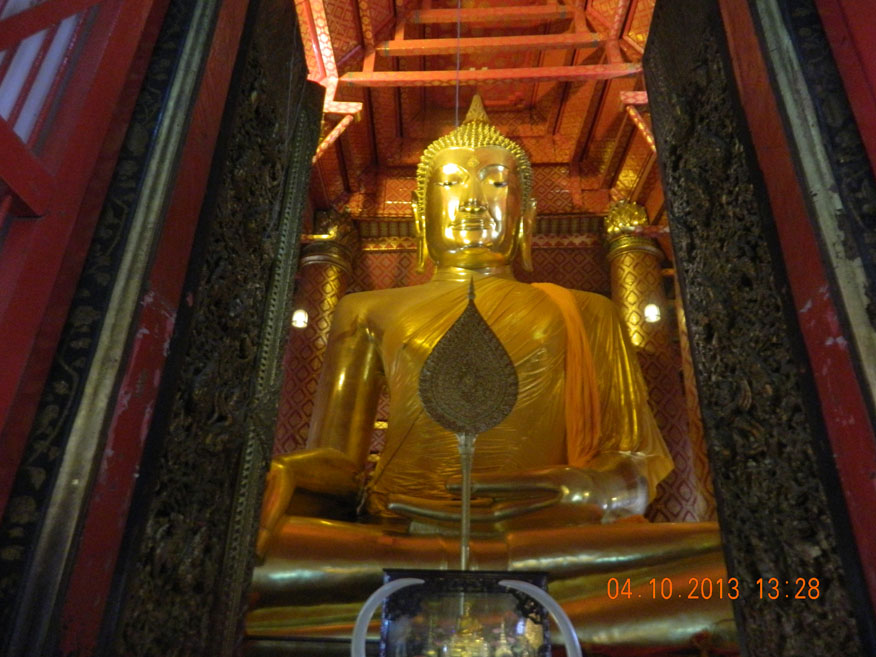
Large Buddha at Wat Phanan Choeng
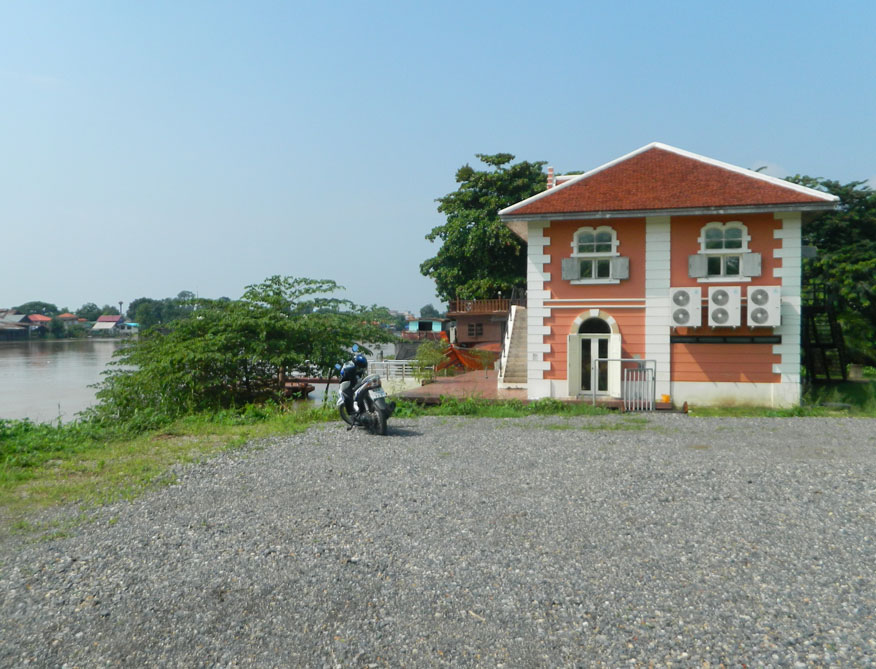
New Museum on the Site of the former
Dutch Settlement
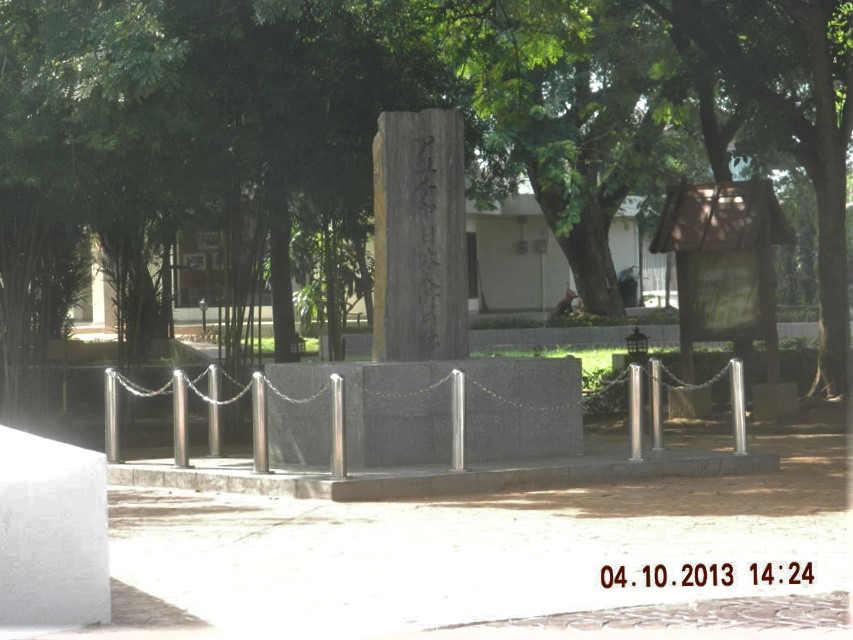
Memorial erected at the Site of the
Japanese Settlement
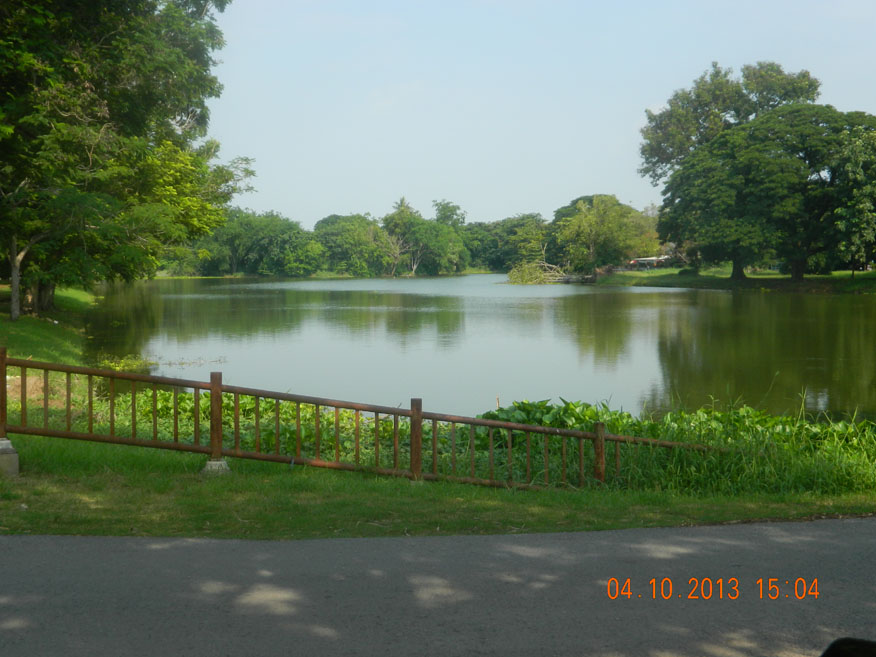
Beung (Lake) Phra Ram
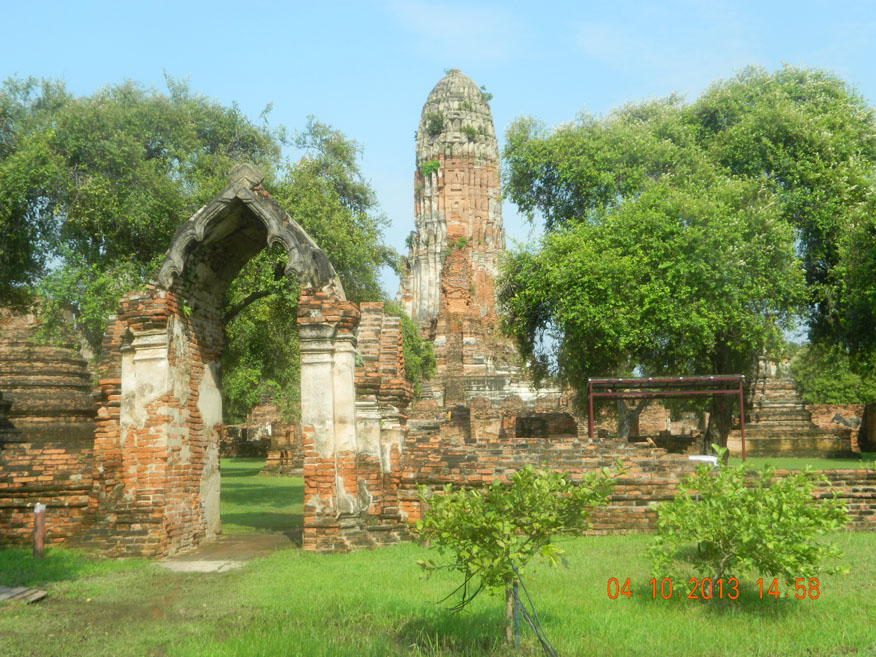
Wat Phra Ram

Wat Chaiwatthanaram
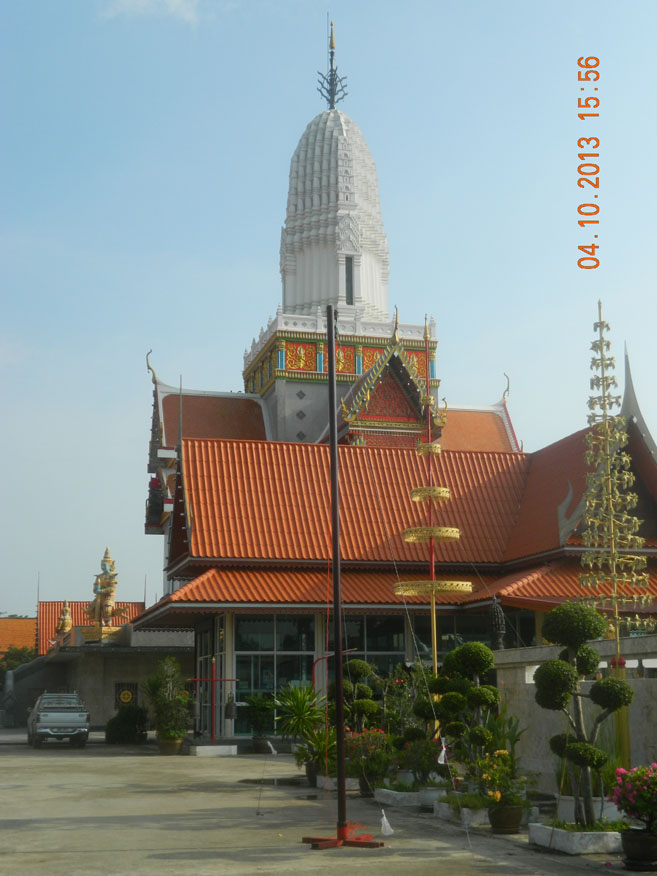
Modern Wat Phattaisawan
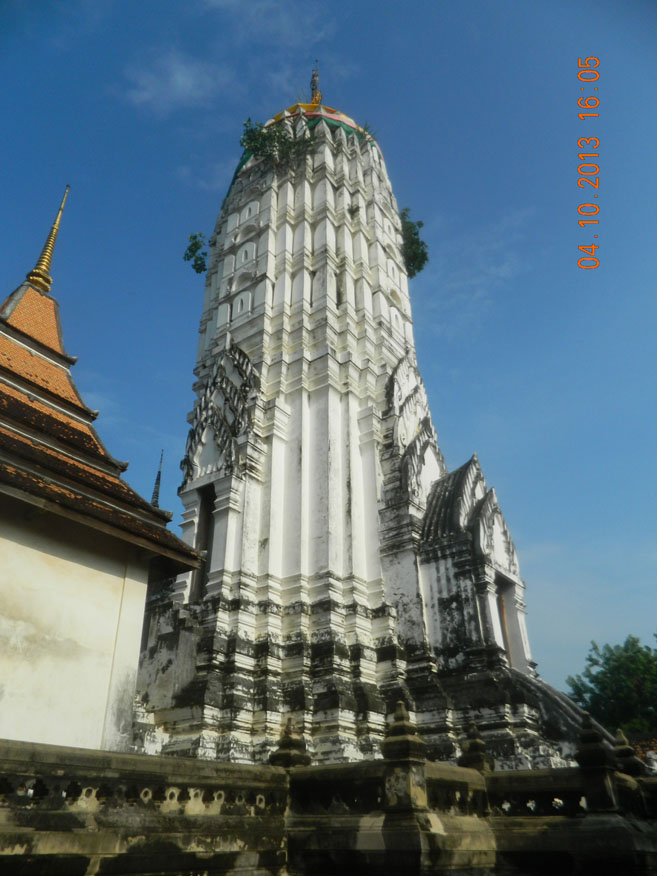
Ancient prang at Wat Phattaisawan
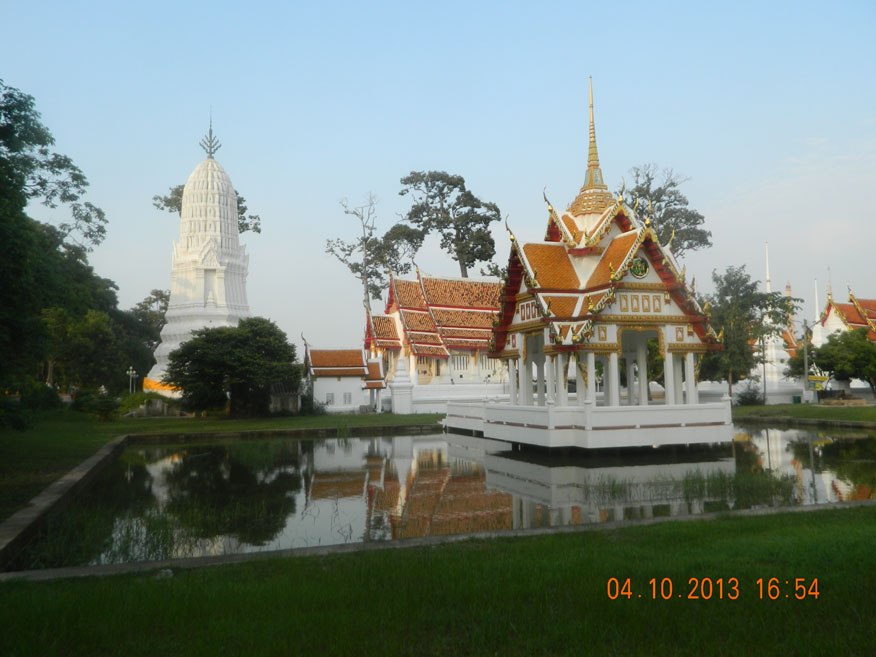
Wat Kasattratirat
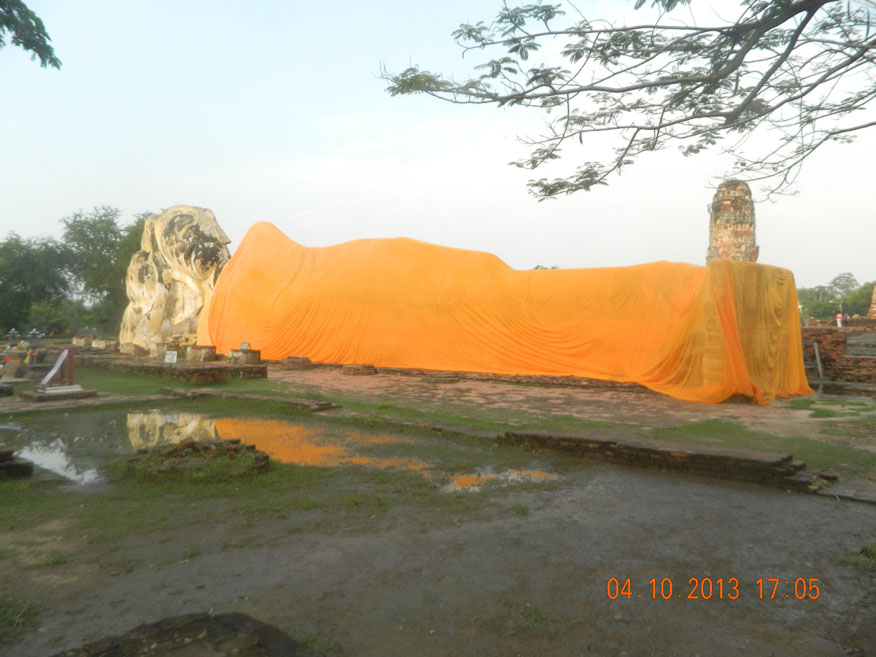
Wat Lokayasutharam
(Temple of the Reclining Buddha)
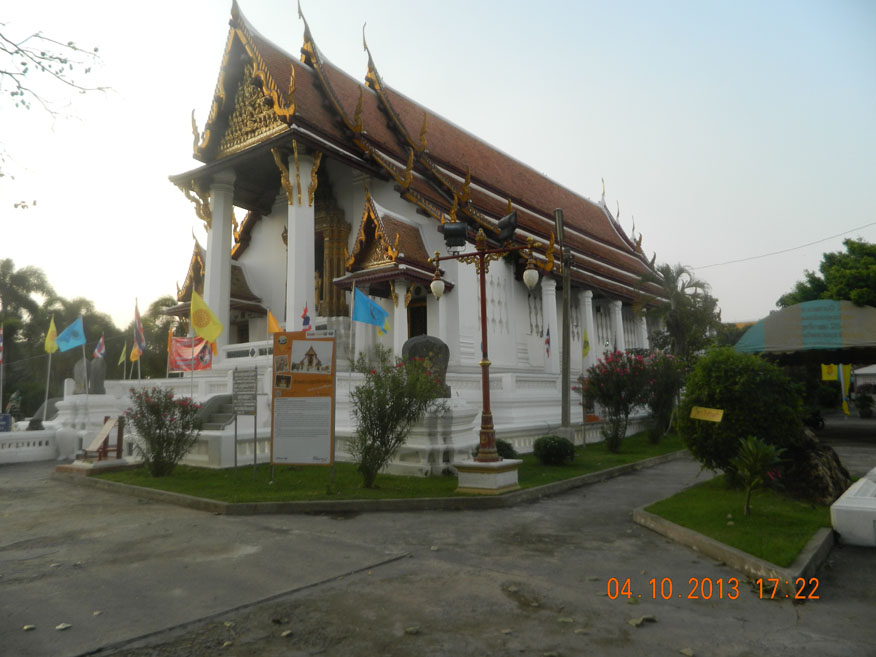
Wat Na Phra Meru
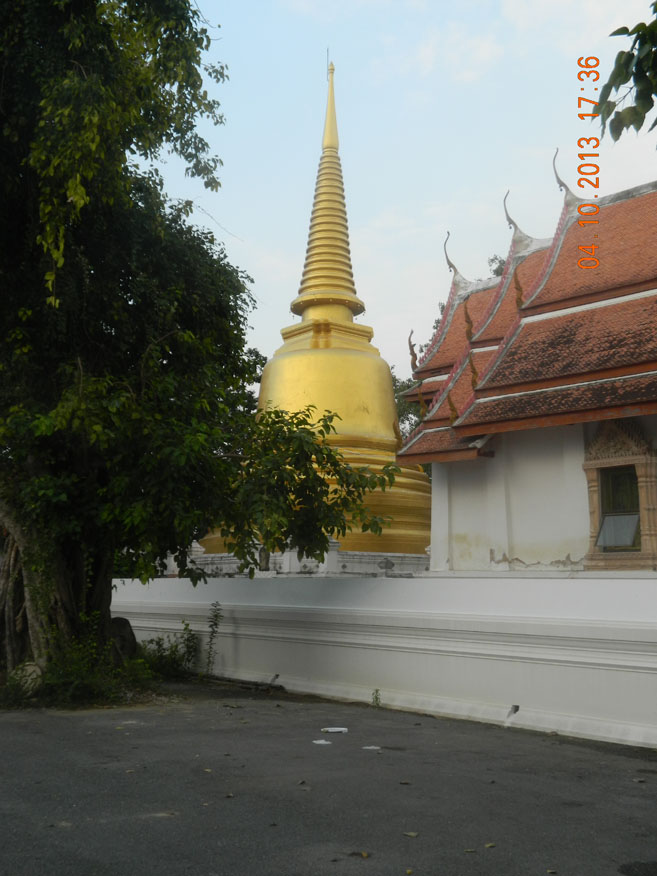
Chedi at Wat Salapoon Worawihan